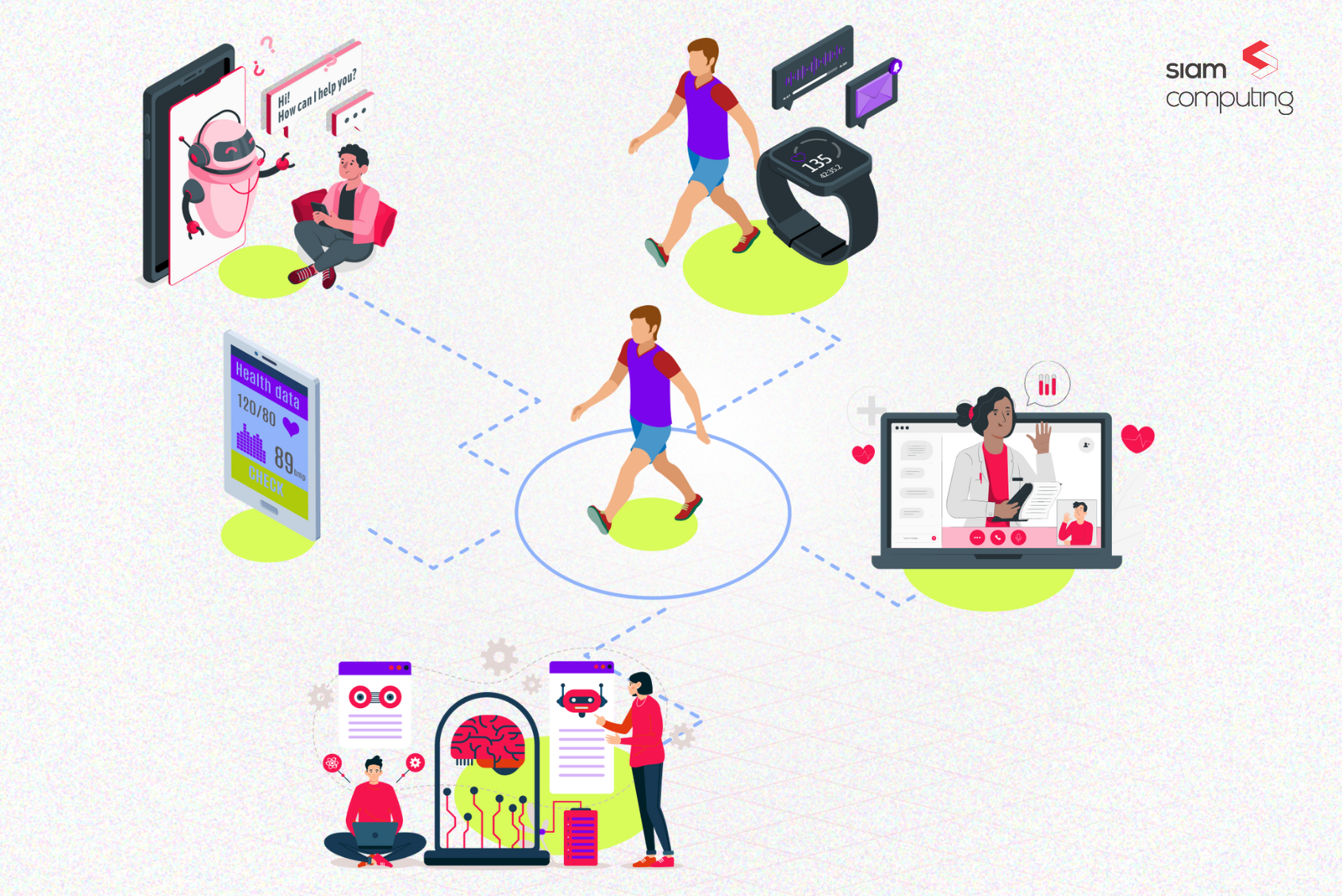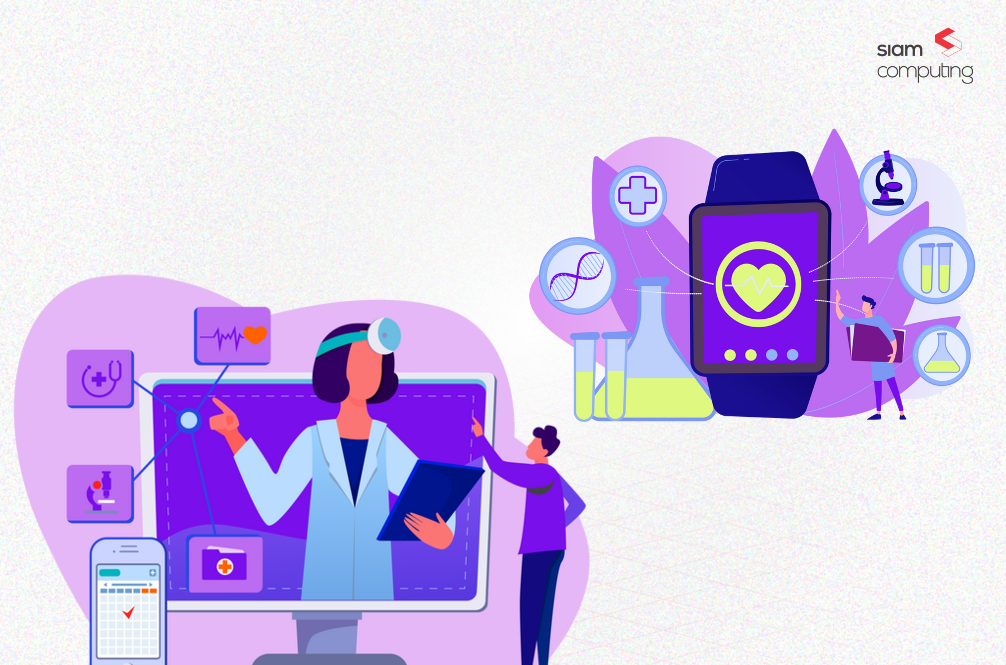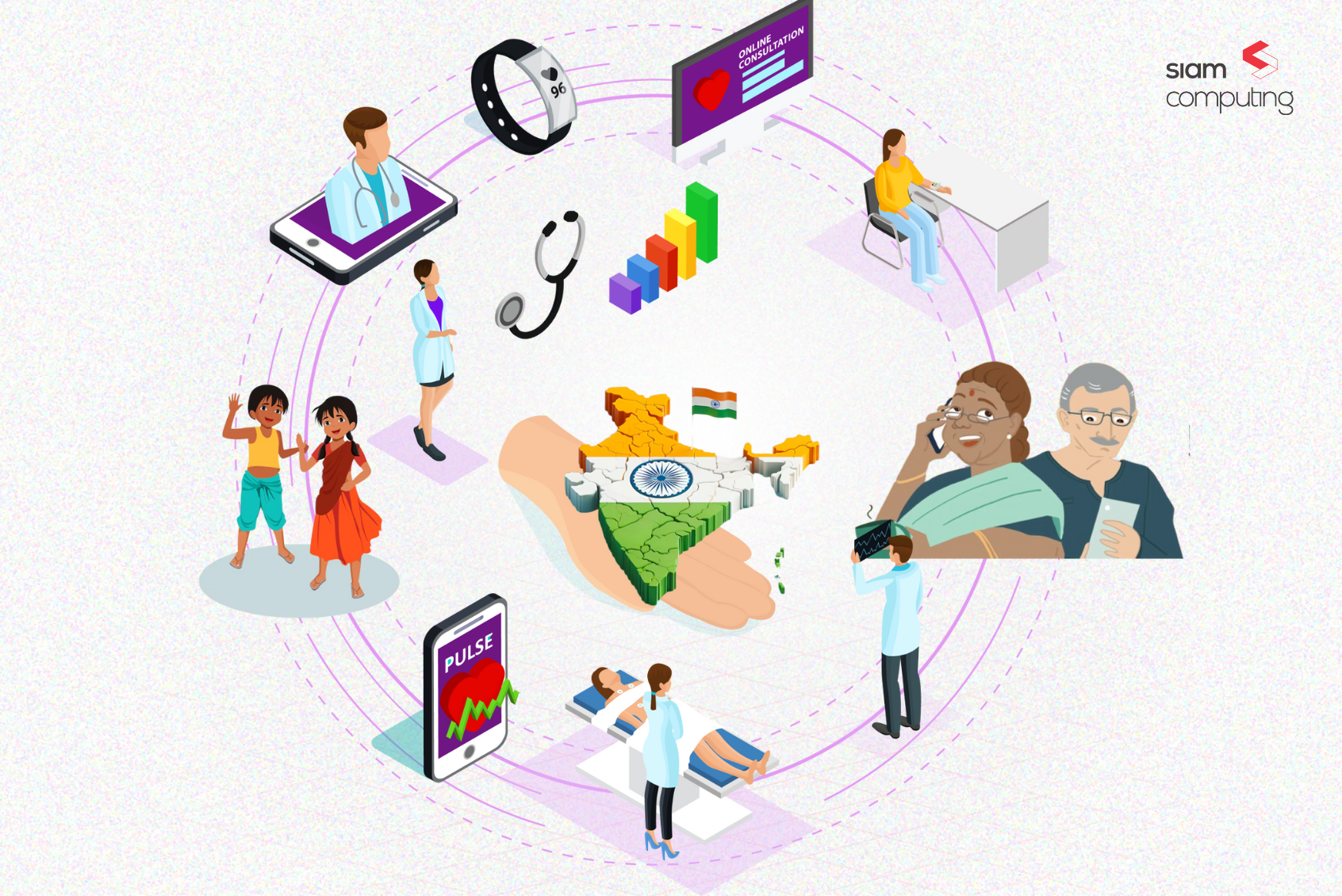In the ever-evolving healthcare landscape, Indian hospitals are grappling with dynamic needs from customers across multiple generations. The trust hospitals have built with the older generation of baby boomers now requires renewal in the digital age, as both patients and their caregivers are digitally-savvy.
Today’s digital consumers, from GenX (born between 1965 and 1980) to GenZ (born between 1996 and 2010), are accustomed to using convenient tech solutions to order food or book movie tickets and make their daily lives easier. They now expect the same kind of digital convenience and smooth user experiences from hospitals too.
The Modern Decision Maker
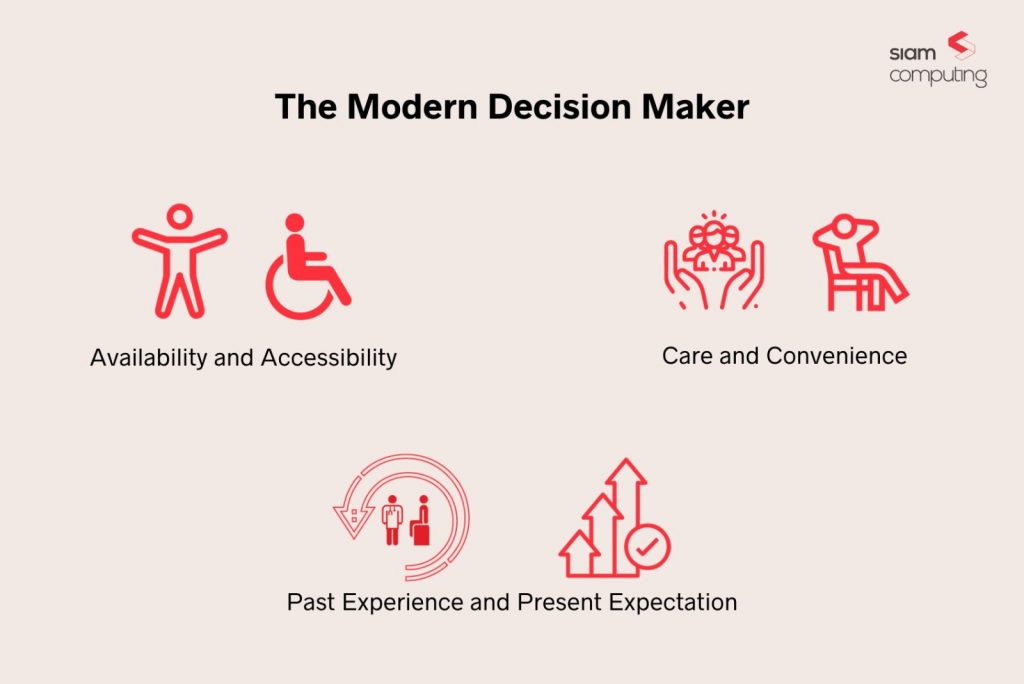
Traditionally, the head of the family was solely responsible for choosing healthcare services. However, in today’s digital age, online reviews, community forums, and social media validation play a significant role in a family’s decision-making process. This shift means that GenY, GenZ, and the millennials, who are actively engaged with digital platforms, now play an important role in influencing healthcare decisions for their family.
Since decision-making authority is diluted, it has become increasingly challenging for healthcare service providers to influence these multi-generational modern decision-makers. This complexity arises from the need to meet their diverse expectations and preferences in the digital realm while also standing out from competitors in a crowded marketplace.
Through our experience working with healthcare providers and developing digital solutions, we have observed that hospitals can shape modern decision-making by adapting to the expanding customer segments and prioritising millennials as the key target audience. To do so effectively, it is essential to understand the key markers that influence these modern decision-makers.
Availability and Accessibility
The modern hospital space has users with varying priorities. If the availability of quality healthcare services is enough for one generation, accessibility to those services becomes the yardstick for the other. For today’s hospital users, how healthcare services are delivered becomes a crucial determining factor in selecting one healthcare provider over another.
For instance, current hospital experiences for patients focus on providing excellent illness recovery and delivering world-class healthcare services by investing in equipment, infrastructure and staff. While this was enough for the decision-making criteria of the older generation, hospitals need to do a bit more to address the needs of a more millennial audience.
Millennials tend to opt for healthcare services that are accessible in more ways than one. They look for cost-effectiveness, transparency, and seamless experience starting from their first touchpoint with their healthcare provider. So, while the availability of world-class healthcare services was enough to convince the decision-makers of yesteryears, the millennial decision-makers need to see that their healthcare providers are also accessible.
Care and Convenience
The baby boomer generation has a higher frequency of hospital visits than millennials. They go to hospitals for emergency healthcare needs, chronic disease management, and lifestyle management. Their decision-making is influenced by the positive brand reputation of the hospital and word-of-mouth recommendations from acquaintances. Typically this results in a lifelong association and trust in their healthcare provider.
Millennials, on the one hand, have limited personal visits to hospitals, typically occurring once or twice a year for their own treatment. However, as caregivers for their parents or grandparents, they visit the hospitals as frequently as the older generation. When making decisions about healthcare services, millennials prioritize the level of convenience the hospitals offer at various touchpoints during their journey.
This generation is used to getting things at a single click – shopping, medicine delivery, travel bookings, etc. Their expectations of healthcare services are also shaped by this need for convenience they experience from other walks of life.
Past Experience and Present Expectation
Of all recommendations millennials rely on for choosing their healthcare provider, the most overpowering one seems to come from their family members. Older generations pass on their healthcare references and hospital recommendations to their children or grandchildren based on their positive experiences with their trusted healthcare providers.
For hospitals, this assurance of quality acts as a start for winning the same trust of millennials. But to retain the confidence of the younger generations, these hospitals have to provide an entirely frictionless experience. This new customer segment has come to rely on efficiency, convenience, and ease that only digital-first solutions can offer.
Hospitals have a valuable opportunity here to capitalize on the trust passed down from their elders and, at the same time, leverage the belief that the millennials place in digital services to position themselves as the preferred healthcare provider.
Millennial Needs
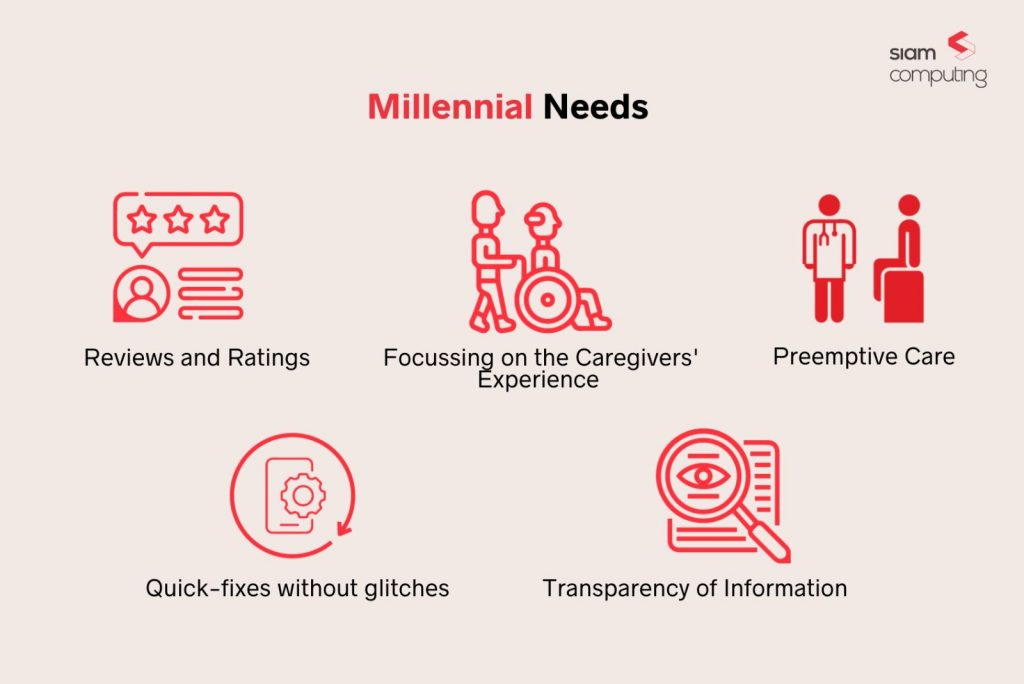
Hospitals must establish a strong digital presence to effectively reach millennials during their decision-making process. While convenience and ease are fundamental expectations of millennial patients and caregivers, their needs are influenced by their fast-paced lifestyle, which necessitates speed and efficiency. Here are some key factors that millennials consider when choosing a healthcare provider:
Reviews and Ratings
Tech savviness is the by-product of a generation used to reaping the benefits of complete digital transformation in almost all walks of life – be it banking, education, shopping, food delivery, payments and so on. They are naturally inclined to check online reviews before subscribing to a service or buying a product. Their process for selecting a healthcare service is the same.
For hospitals to attract positive customer reviews and capture the attention of tech-savvy millennials, providing a seamless digital patient experience is essential. This frictionless experience is crucial for hospitals to gain visibility among this digitally-driven generation.
Focusing on the Caregiver’s Hospital Experience
Indian hospitals focus on providing excellent reactive care to patients and managing immediate requirements. This leaves no scope to take the caregiver’s experience into account. As millennials frequent the hospitals more as caregivers than patients, they are at the receiving end of endless friction points.
Some of these include long waiting queues at the hospital to see the doctor, no information linkage between patients and their caregivers, inefficient consolidation of medical records, endless follow-ups with the administration staff, and delayed treatment processes due to legacy formalities.
A digital-first approach can address and eliminate all these problems from the patient and caregiver journey. For example, hospitals can cut down on long appointment waiting queues by leveraging online consultation and telecommunication. To ease the caregiver’s angst, hospitals can provide customizable dashboard for patients and their caregivers via an efficient digital solution so that they can get instant updates and monitor their entire healthcare journey.
Quick-fixes without glitches
Millennials are used to having quick and efficient solutions to their problems at their fingertips. The need for an efficient digital product for streamlining hospital interaction and eliminating all stress is nowhere more apparent than in the busy work schedule of millennials.
This generation needs help managing their work, time, and priorities and is looking to reduce physical visits to any place, be it a pharmacy, clothing store, movie theatre or hospital. Mobile apps for patients can help here and revolutionize the entire hospital experience for the millennials by providing all necessary information online. They can empower patients towards a more fruitful recovery journey, facilitate preventive care, and establish transparency in the entire process to address the skepticism that millennials have before choosing a healthcare provider.
Transparency of information
Millennials value transparency when it comes to healthcare information, such as medical records, treatment costs, and reasons for prescribed treatments. They find it difficult to trust healthcare providers who keep these important details hidden or unclear due to the limitations of their current practices or legacy software solutions.
However, by adopting digital-first healthcare solutions, hospitals can provide easy access to these details, eliminating ambiguity and earning millennials’ trust.
Preemptive Care
Millennials may not visit hospitals frequently for their own medical needs, but they are interested in lifestyle management and achieving better health outcomes. They embrace wearable fitness devices to track their physical activities and their health outcomes.
The current healthcare system in India which primarily concentrates on providing reactive care for illnesses, doesn’t align with the needs of the millenials. By integrating wearable technology with an efficient digital platform, hospitals can shift towards proactive or preemptive care, instead of reactive care. This approach addresses the needs of millennials and enhances the experience for existing customers, opening new opportunities for this customer segment.
Final Thoughts
The digital transformation of healthcare is reshaping the way hospitals cater to the needs of every generation, with a particular focus on millennials. Providing a smooth and user-friendly experience is crucial not only within hospital walls but also through digital channels that mimic popular apps in other aspects of millennials’ lives.
However, challenges such as system downtime, inefficient app onboarding, limited functionality, and online-offline disconnects need to be addressed to fully leverage the power of digital solutions and create a fruitful healthcare journey for all stakeholders involved.
Siam Computing has played a significant role in guiding healthcare providers towards efficient digital transformation and user-centric solutions that solve existing problems and exceed the expectations of multi-generational users. By identifying key touchpoints in unique customer journeys, we help hospitals deliver superior patient experiences, acquire new customers, and retain existing ones. Embrace the new era of healthcare where user needs orchestrate the evolving and dynamic landscape by partnering with our Product Strategy and Consulting Team. Together, we can navigate the digital transformation and unlock the full potential of healthcare for every generation.



